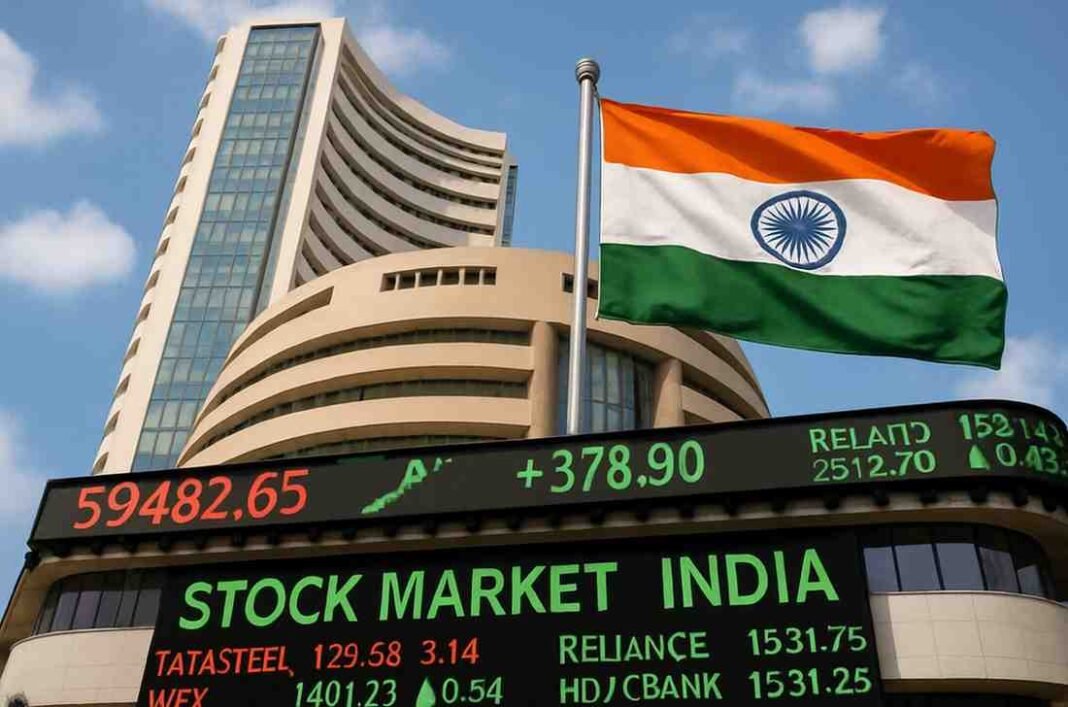Indian Equities Fall Sharply as Trade Tensions Escalate
Indian benchmark indices opened sharply lower on Thursday, August 7, following a fresh wave of trade-related concerns after United States President Donald Trump announced an additional 25% tariff on Indian exports. The decision, which effectively doubles the existing duties to 50%, places India among the highest-taxed trading partners of the US, significantly impacting investor sentiment.
The BSE Sensex tumbled 335.71 points to 80,208.28 during early trade, while the NSE Nifty declined by 114.15 points to settle at 24,460.05. The sharp drop came amid broader concerns over the long-term economic impact of worsening bilateral trade ties and their potential to derail India’s export momentum.
Tariff Hike Sparks Investor Caution
The tariff increase, announced late Wednesday in Washington, adds to the growing list of global economic uncertainties that have been weighing on markets. India’s key export sectors — including pharmaceuticals, textiles, and automotive components — are expected to face the brunt of the higher duties, raising fears of shrinking order books and earnings pressure for companies in these industries.
Although Gift Nifty futures were trading marginally higher at 24,586 points around 7:05 a.m., suggesting a mildly negative to flat start, the actual market performance reflected broader nervousness among traders. Analysts attribute this divergence to the sudden nature of the US announcement and the absence of an immediate counter-response from the Indian government.
GDP Impact and Market Outlook
Experts are now beginning to assess the macroeconomic implications of the tariff escalation. Dhiraj Relli, CEO of HDFC Securities, stated in an interview with Reuters that should the tariffs remain in place for a year, India could see a reduction of 30 to 40 basis points in its annual GDP growth rate.
Prior to the tariff news, the Reserve Bank of India (RBI) had retained its growth forecast for FY25 at 6.5%, downplaying global headwinds. However, analysts are cautioning that persistent trade hostilities could lead to a reassessment of these estimates in upcoming policy reviews.
“The doubling of tariffs, coupled with worsening bilateral ties, could shake markets out of their complacency,” said Nilesh Shah, Managing Director of Kotak Mahindra Asset Management. “Export-oriented firms may need to rethink their pricing strategies and supply chains, which could introduce volatility in both earnings and market valuations.”
Global Markets Show Mixed Reaction
While Indian equities reacted negatively, broader Asian markets appeared to shrug off the development, buoyed by exemptions granted to major multinational firms in the tech sector. Asian stocks rose, led by gains in semiconductor companies after Trump’s simultaneous announcement of potential 100% tariffs on chip exporters came with carve-outs for firms like Apple Inc., which continue to invest in the US economy.
MSCI’s benchmark index for Asian equities climbed 0.8%, while US equity futures also traded higher. Contracts tied to the S&P 500 and Nasdaq 100 gained 0.3%, indicating cautious optimism among global investors. Shares of Nvidia Corp. advanced in after-hours trade, while Samsung Electronics surged 1.9% and Taiwan Semiconductor Manufacturing Co. jumped 4.4% in early trading.
Currency and Commodities Steady Amid Trade Friction
Despite the tariff shock, the Indian rupee is expected to open stable, supported by steady one-month dollar-rupee non-deliverable forward (NDF) contracts. The forex market appears to have priced in some degree of risk, and RBI’s active intervention is likely to prevent sharp currency swings.
Oil prices edged slightly higher after a prolonged five-day slump — the longest since May — as global markets monitored US efforts to restrict the flow of Russian crude and Trump’s intensified diplomatic push to bring an end to the Ukraine conflict. Meanwhile, bond markets remained under modest pressure, with the yield on 10-year US Treasuries ticking up by two basis points to 4.25%.
All Eyes on New Delhi and Washington
Market participants now await official responses from both the Indian and US governments. Any indication of upcoming talks or policy adjustments could help stabilize market sentiment. Analysts are also watching for the RBI’s stance in its upcoming monetary policy review, particularly any references to global trade risks.
For now, the Indian markets appear set for a period of heightened volatility, with geopolitical developments continuing to steer the investment climate.








